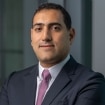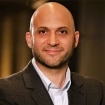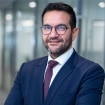{{item.title}}

Fast-growing cities in the Middle East and North Africa (MENA) region have the opportunity to overcome the challenges caused by economic development, population growth, and, in some places, urban decay. Already, some two-thirds of the MENA region’s population of around 322 million live in urban areas, and the numbers are expected to increase. Urban development has resulted in substantial CO2 emissions; the building and construction sector accounts for about 37 percent of energy-related emissions (a record high in 2021).
This was first published by Bloomberg Al Sharq.
The MENA region’s ambitious development goals present a chance for governments to improve quality of life by aligning urban regeneration with environmental, social, and governance (ESG) principles. This effort can preserve cultural and historical heritage, thereby contributing to national identity. ESG-infused urban regeneration can stimulate an urban renaissance, reviving cities and making them more attractive to both residents and investors, as well as to visitors as part of the region’s tourism ambitions. The combination of ESG and urban regeneration also can create sustainable economic growth.
By the late 1980s, 40 years of depopulation and housing stock deterioration had left the central city district of Santiago, Chile, in disrepair. Investors fled for opportunities at the city’s periphery, where they saw the hope of better returns. A program begun in 1990 set out to reverse the decline—but not in the usual way. Rather than simply dangling incentives to entice developers, city leaders formed a partnership between the public and private sectors and brought together residents, local businesses, and other stakeholders. Together, they formulated a holistic strategy to revitalize the district’s neighborhoods, one in which quality of life, historical and cultural values, and environmental considerations were intrinsic to the project’s goals. To facilitate funding, the government kicked in subsidies, relaxed terms and conditions, and ran pilot projects to limit risk. Today, the Santiago municipal district is one of the most vibrant residential areas in the entire country.
Many cities in the Middle East and North Africa (MENA) region face the predicament Santiago once did. Rapid, unfettered expansion that focused on high-end development has fueled sprawl and left urban cores to decay. Such a path is untenable in the MENA region, in which two-thirds of the population—over 330 million people—live in urban areas. By 2050, there will be more than 440 million people in MENA cities—equivalent to the entire regional population in 2020. Considering that operational CO2 emissions in the building and construction sector represent about 37 percent of energy-related emissions (a record high in 2021) and that the sector accounts for some 34 percent of global energy demand (in volume), it is clear that major interventions in the existing built environment are urgently needed.
Aligning urban regeneration efforts with ESG principles provides a powerful tool with which to overcome the common challenges of regeneration. Sustainability, whether it involves improving infrastructure, increasing efficiency in construction, or making buildings more energy efficient, is central to the environmental goal. Countries such as Bahrain, Saudi Arabia, and the UAE have pledged their commitment to a net-zero target in the coming decades. Preserving the social fabric and engaging communities in the regeneration effort fosters the social agenda. Providing transparency and enforcing the right values establish a sound basis for governance.
Urban regeneration in line with ESG principles provides two additional benefits. First, regeneration programs based on ESG principles conform to the growing demand from investors and financiers for ESG compliance, and they should thus lead to further financing opportunities and foreign direct investment. Second, such urban regeneration offers an attractive opportunity for countries in the Gulf Cooperation Council (GCC). These countries aim to preserve their rich history and cultural heritage to benefit residents, restore old city districts, add back vital housing and commercial space, and develop tourism.
Embedding ESG principles into an urban regeneration project calls for a particular mindset, one embodied in the metaphor (and acronym) of breathing LIFE into the project in four phases.
Every project must begin with a period of learning and listening, to understand the socioeconomic, cultural, and historical characteristics and community needs of the area. It is important for all stakeholders to communicate their needs and expectations and to understand the project in the broader context of the whole city.
ESG principles must be embedded in every phase and aspect of the project, from exploratory conversations and planning to design and implementation; from ongoing operations to managing the assets over the long term.
Projects need to fix ESG targets and other KPIs that translate the commitment into a tangible, measurable effort.
As a result of these actions, community members earn rewards—enjoying a higher quality of life— and the public- and private-sector sponsoring partners ultimately reap the payback of the effort.
Urban regeneration holds great potential to manage the impact of the MENA region’s rapid population growth, control urban sprawl, and reverse inner-city decay. Using the LIFE approach to infuse ESG principles throughout the project is the most effective way to manage the complexities of programs that are designed to serve socioeconomic, cultural, quality of life, sustainability, and other goals. The result will be improved lives, bustling cities, and public–private funding to promote continued urban revival and economic development.
Breathing life back into Middle Eastern cities
Many Middle East cities have been growing at a remarkable pace. For all the good that growth brings, it can create economic, environmental and social issues, from sprawl and decaying urban cores to displaced communities and neglected cultural and historical sites. However, by aligning urban regeneration with environmental, social, and governance (ESG) principles, cities can overcome the many challenges that urban revival programs often face.







Menu